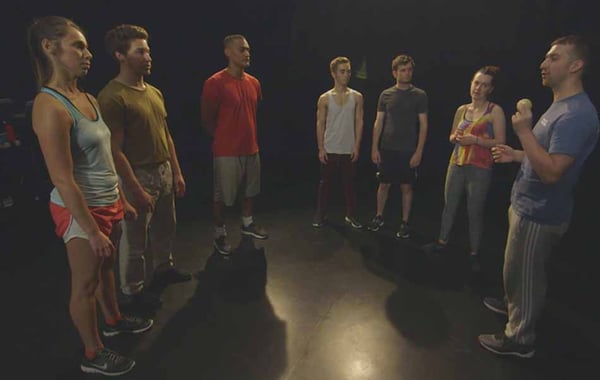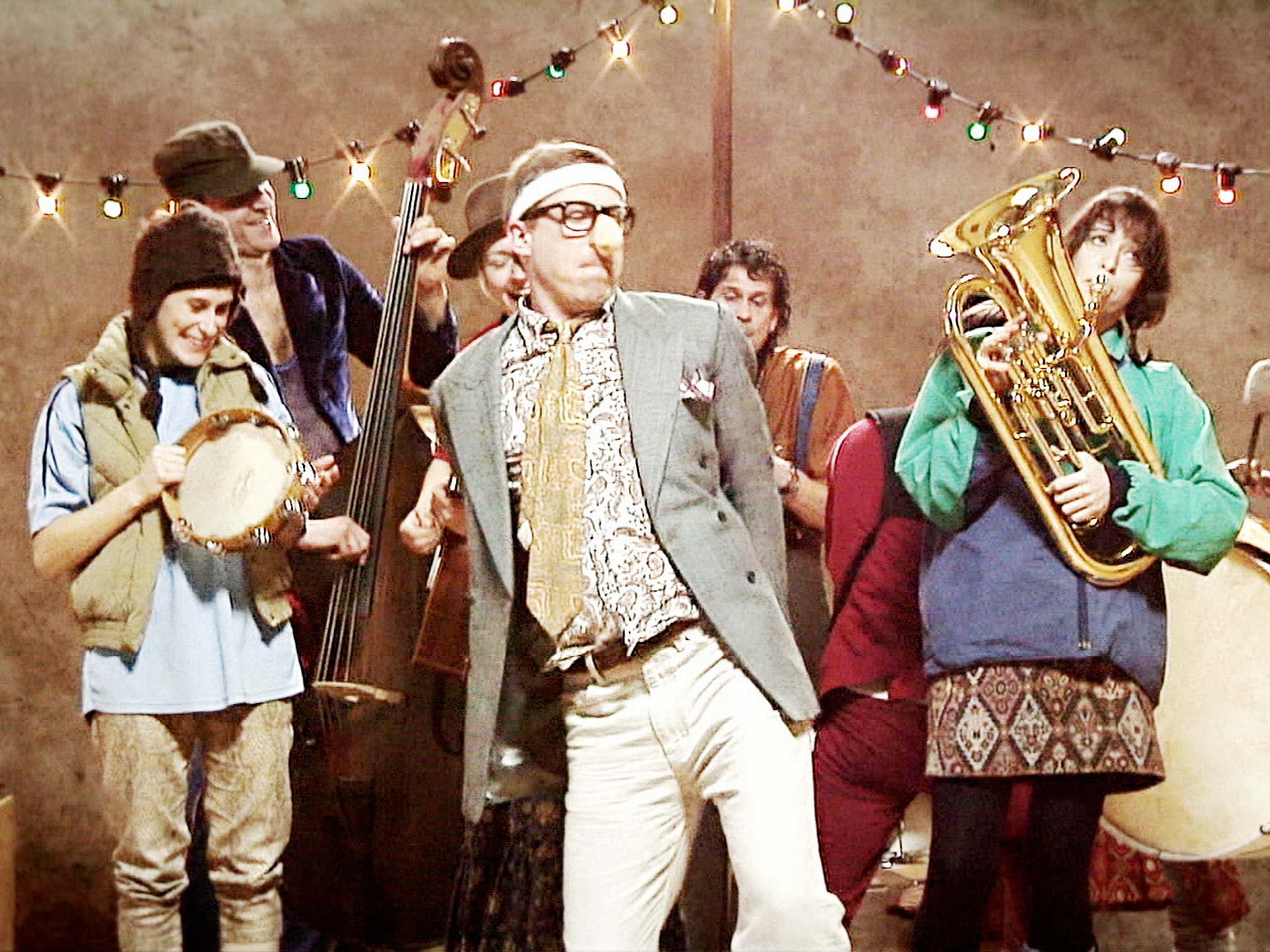13 September 2021
5 silly icebreakers for Theatre & Performance students
Christopher Bange and Ezra LeBank
Theatre Arts Faculty at California State University, Long Beach
As we step into the theatre classroom, what could be better for getting going than some playful fun for you and your students? Here are five icebreaker exercises to begin your class with some silliness.
1. The Ministry of Silly Walks
Get the students into a circle. Say, “please observe very clearly what I do.” You will lead by example and do a “silly walk” into the centre of the circle. Make a clear physical stop, say your name, turn, and do the same silly walk back. Then say, “please do exactly what I just did.” Let them try it. They will possibly say their own names, so after the first try, describe the rules of the game.
- You do a silly walk to the centre of the circle and make a clear physical stop.
- Say your name.
- Turn and do the same silly walk back.
- Then everyone will repeat the exact same silly walk, say the other person’s name, and do the same silly walk back.
Then gesture to the person next to you in the circle to begin. Go around the circle until everyone tries it. It is important that everyone does a completely different silly walk than the person before. It’s also important that the students don’t hesitate if they don’t know what kind of silly walk to do, just start walking and see what happens.
 A Frantic Assembly Warm Up on Digital Theatre+
A Frantic Assembly Warm Up on Digital Theatre+
2. Funny Faces and Funny Bodies
This is a variation of the mirror exercise with a silly twist. Two students will face each other as if they are looking in the mirror. Student A will be the leader and Student B the follower. Student A will make funny faces and Student B will physically create the mirror image of Student A. Use only the face at this point. This will go on for a few minutes as Student A leads student B through lots of funny faces.
Tell everyone to switch as student B becomes the Funny Face Leader and Student A follows. This continues for a few minutes. Then you can invite them to make mirrored funny faces at the same time, so it isn’t clear who’s leading and who’s following, as long as the faces are funny!
Note: You might include a funny face physical warm-up to get started, as most students will not have used their faces this much before.
3. Stone-Cold Dance Off
This is a dance game. It is very simple. Direct all the students to come up and dance! The object of the game is for everyone to maintain a complete “deadpan” expression on their face at all times. It just so happens that people dancing with a stone-cold expression is hilarious…. try it and see.
This is an elimination game, so if someone laughs or breaks into a smile, they are out! You can designate one of the first people out to be the smile police. Alternately, self-removal is suggested so it’s low-pressure and lots of fun. Having epic sounds on your dance mix is essential – the cheesier the songs are, the better.
4. Welcome to the Thundersquare!
This game requires two pool noodles (long foam pool toys). It’s a riff on “WELCOME TO THE THUNDERDOME” from the movie Mad Max, though the students are not hooked up to giant rubber bands (YouTube it).
The class will form a circle (or square) around two students in the middle who each have a pool noodle. The two students with the noodles in the middle will close their eyes and spin ten times. The object of the game is to be the first person to touch the other one with the pool noodle. It’s simple and super fun.
The class acts as a barrier. If the students with the pool noodles get too close to each other or to the students in the circle/square, they will nudge them back (If everyone has a pool noodle, they can use the pool noodle to gently nudge!)
I start the game with a chant (because chants are fun) “Thunder Square, Thunder Square, Thunder Square…” Then after a few spins, I hush the chanting, and say “Game on!” This game is sooo much fun for the students, especially if you add a dramatic flair as the host of a Gladiator-type event. Enjoy!
5. 1-2-3
Place the students in pairs and have them stand facing each other an appropriate distance apart. Step one: Have them continuously count 1-2-3-1-2-3 going back and forth for each number. This means they will alternate who gets to say “one” each time, etc. Once they get good at this, move on to…
Step two: Student A will replace the number “one” with a silly sound and movement. This becomes the new “one” so it goes… *silly sound and movement,* “two,” “three,” and continues repeating so they alternate who does the silly sound and movement each time.
Step three: Student B will replace the number “two” with a new silly sound and movement. Once they repeat their new “two,” they will co-create a silly sound and movement to replace “three,” and finally their 1-2-3 is a unique series of ridiculous sounds and movements that only they know.
As a final step, the instructor can guide the students to get bigger, smaller, faster, slower, or even try it like they’re rewinding (if the students remember when rewinding was a thing!). Make sure to give clear demos, and only add one new element at a time so they are pros by the end. Be super silly!
I hope that playing any or all of these silly games helps your class remember to play, be silly, and don’t sweat the small stuff. We wish you all a safe and silly semester.
Related blogs
Introducing Unlocked: A new way to engage students with dramatic texts
How do you make something that genuinely helps teachers? It takes time and care to nurture the...
Read moreThe key 21st Century Skills to help students thrive
21st Century Skills. Future Readiness. Life Skills. Global Citizenship. The Four Cs. Higher Order...
Read more5 tips for bringing life skills into your classroom
Preparing students for life outside the classroom (be that their personal lives, college,...
Read moreGet the latest teaching tips straight to your inbox
Explore free lesson ideas and inspiration, education news, teaching trends and much more by signing up to regular blog updates!






.png)
